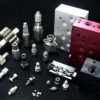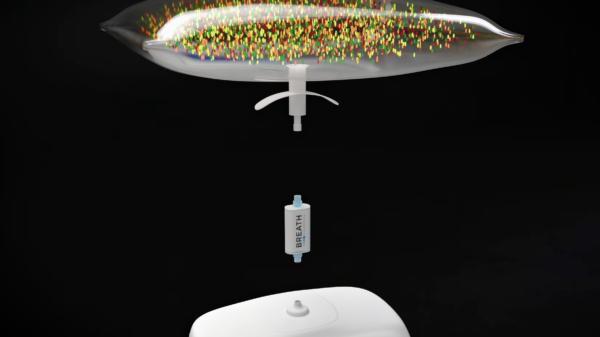Researchers in Korea have developed a new diagnostic technology that can help find lung cancer early using only a few drops of blood.
On Thursday, the Ulsan National Institute of Science and Technology (UNIST) said that a team from the Department of Biomedical Engineering has developed EV-CLIP. Additionally, this is a technology that can diagnose cancer mutations with small amounts of plasma without the necessity of pretreatment.
Meanwhile, the university published “Digital Profiling of Tumor Extracellular Vesicle-Associated RNAs Directly from Unprocessed Blood Plasma,” on the cover of ACS Nano, which is a well-regarded journal in the nano field.
The EV-CLIP technology fuses nanovesicles (EVs) from the blood with charged liposomes (CLIPs) containing molecular beacons inside tubes thinner than human hair. Cancer cells shed nanovesicles that carry mRNA and miRNA. When the molecular beacon detects this information, it emits a fluorescent signal. By using this principle, EV-CLIP can diagnose cancer using just 20 microliters (µL) of plasma.
Furthermore, the team electrically charged the liposome surface to enhance sensitivity.
In a clinical trial with blood from 83 patients, the test identified 100 per cent of EGFR gene mutations. These help determine chemotherapy options for lung cancer. It also accurately found mutations in patients with stage 1 and 2 lung cancer. Conventional NGS-based liquid biopsies struggle to detect these.
Read more: Breath Diagnostics onboards new president and closes critical financing
Read more: Breath Diagnostics pioneers novel lung cancer breath test
Global lung cancer diagnostics market growing in next few years
The team’s plan include developing a diagnostic kit, which will include a tech-transfer to biotech company LabSpinning.
Additionally, Grand View Research anticipates the global lung cancer diagnostics market will grow significantly over the next few years.
The market was valued at USD$4.68 billion in 2023. Furthermore, the research firm projects the market will expand at a compound annual growth rate (CAGR) of 6.5 per cent from 2024 to 2030, finding USD$7.26 billion by 2030.
This growth is driven by factors such as the rising incidence of lung cancer, particularly in developing countries, and the increasing adoption of advanced diagnostic technologies. The market’s expansion reflects the growing demand for innovative diagnostic tools to detect lung cancer at earlier stages.
OneBreath, developed by Breath Diagnostics Inc., analyzes volatile organic compounds (VOCs) in exhaled breath to detect lung cancer. Cancer cells produce unique metabolic byproducts, which alter the composition of VOCs in the breath. OneBreath collects and analyzes a patient’s breath sample using advanced gas chromatography and mass spectrometry techniques. By discovering specific VOC biomarkers, the device offers a non-invasive way to diagnose lung cancer.
Guardant360, a liquid biopsy test by Guardant Health (NASDAQ: GH), also detects lung cancer by analyzing circulating tumour DNA (ctDNA) in the blood. As cancer cells shed fragments of their DNA into the bloodstream, these fragments carry genetic mutations associated with the disease. The test uses next-generation sequencing (NGS) to identify these mutations.
.












